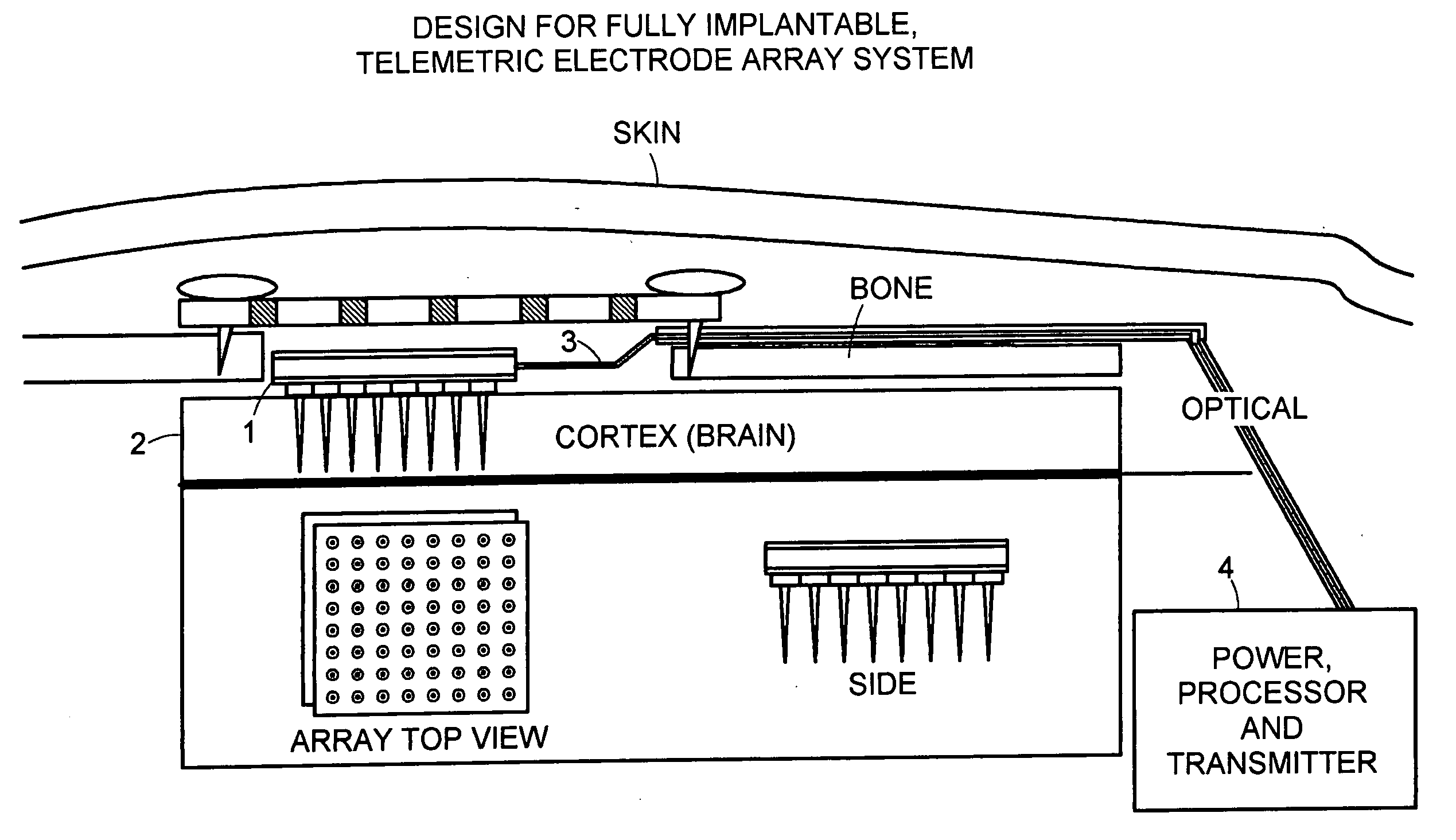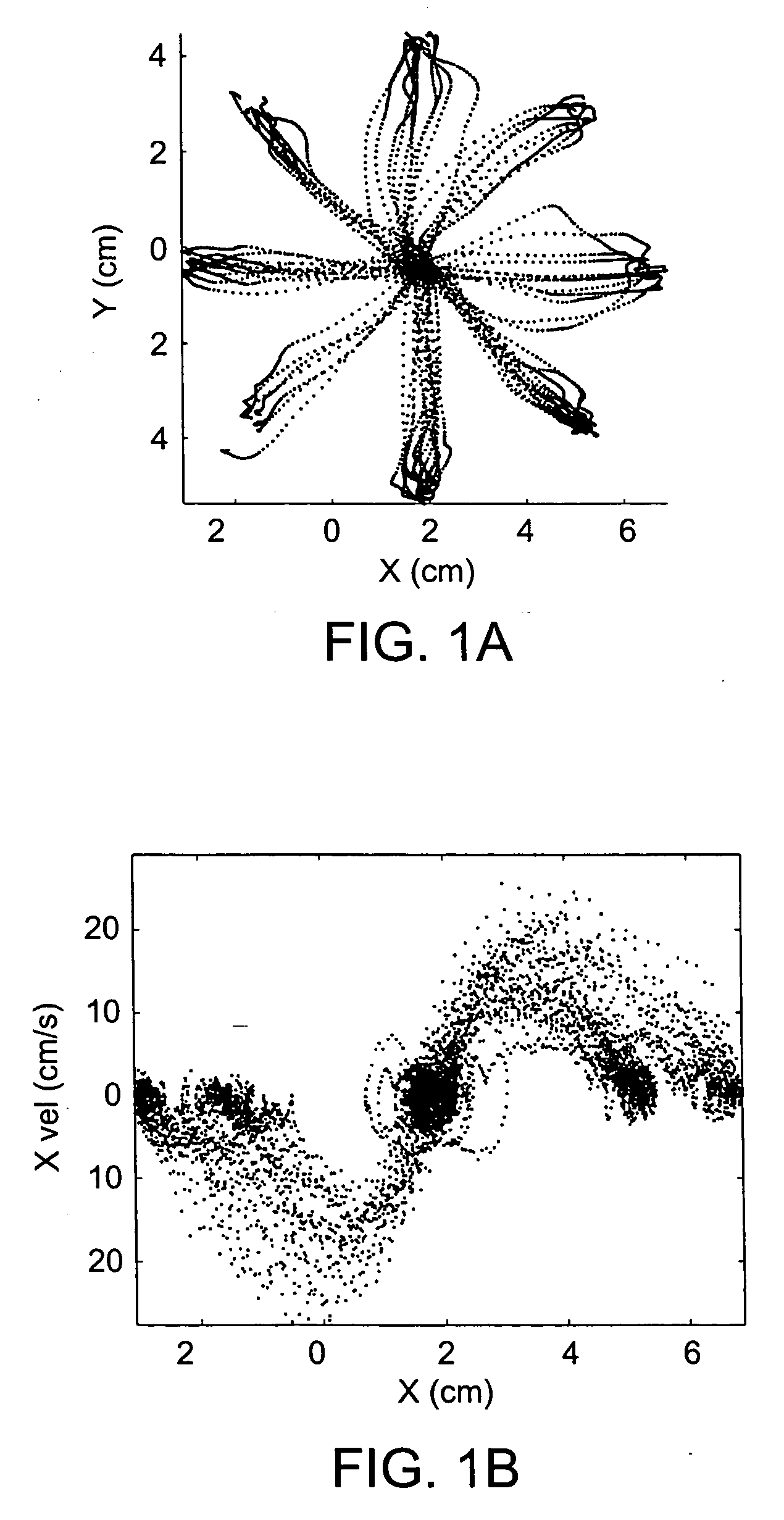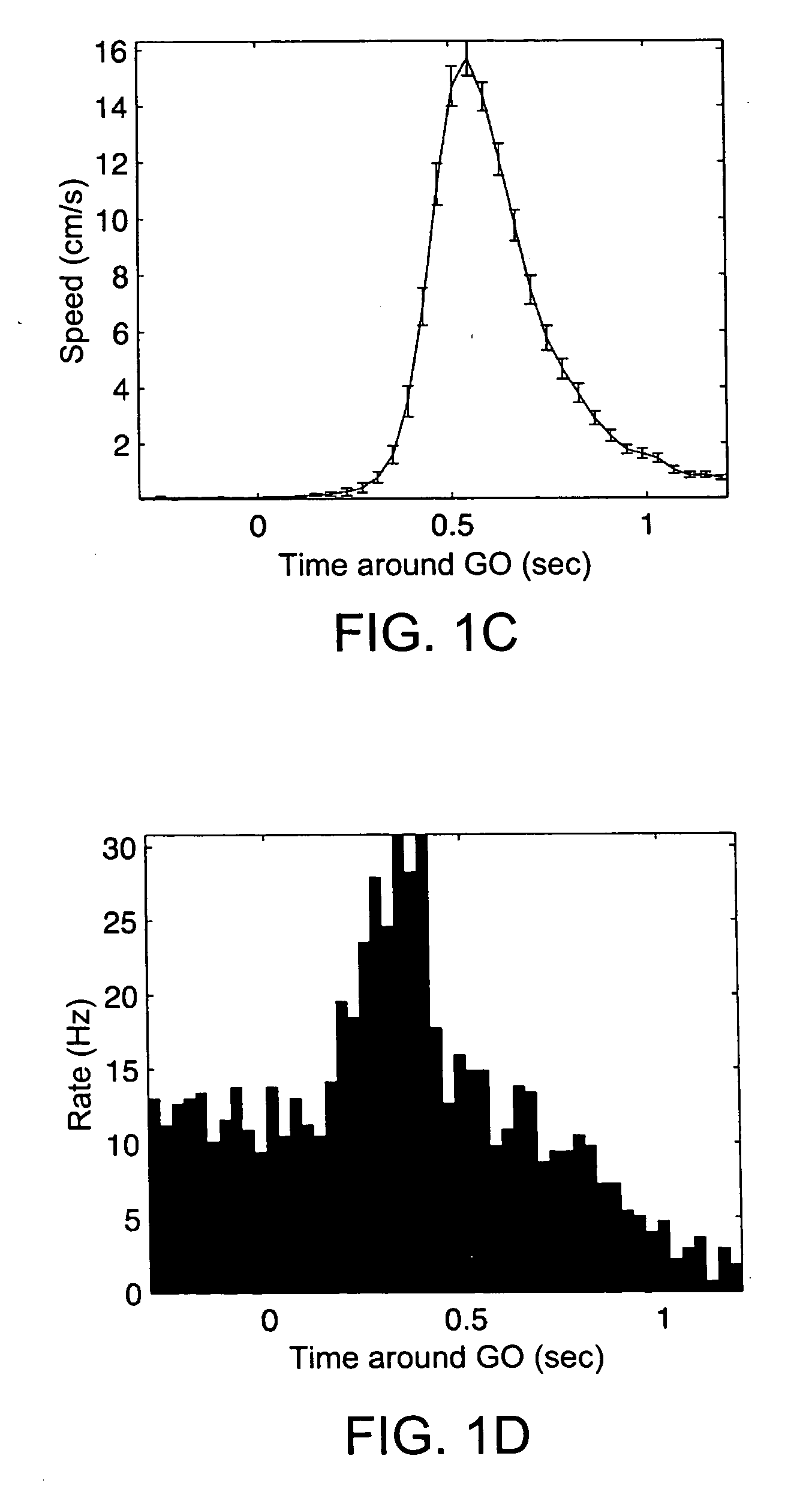Neurological signal decoding
a neuronal signal and signal technology, applied in the field of neuronal signal decoding, can solve the problems of relating behavior to neural activity, n mi information coded, and difficult to determine, so as to reduce or remove statistical dependencies among variables across experiments, and effectively control hand motion
- Summary
- Abstract
- Description
- Claims
- Application Information
AI Technical Summary
Benefits of technology
Problems solved by technology
Method used
Image
Examples
Embodiment Construction
[0034] A description of preferred embodiments of the invention follows. The description is presented by way of examples.
Methods—Behavioral Task
[0035] Three monkeys (one Macaca fasicularis and two M. mulatta) were operantly conditioned to track a randomly moving visual target. Each monkey viewed a computer monitor and gripped a two-link, low-friction manipulandum that constrained hand movement to a horizontal plane. Manipulandum position was sampled at 167 Hz, with an accuracy of 0.25 mm on a digitizing tablet (Wacom Technology Corp., Vancouver, Wash.) and recorded to disk. The task required manually tracking a smoothly and randomly moving target. Hand position was continuously reported on the monitor by a ˜0.2° circle (0.5 cm radius on the tablet) (See FIG. 2A). At the beginning of each trial, a 0.6° (1.5 cm tablet radius) red tracking target appeared in a random position drawn from a two-dimensional, zero-covariance Gaussian (up to the cutoff imposed by the edge of the screen), ...
PUM
 Login to View More
Login to View More Abstract
Description
Claims
Application Information
 Login to View More
Login to View More - R&D
- Intellectual Property
- Life Sciences
- Materials
- Tech Scout
- Unparalleled Data Quality
- Higher Quality Content
- 60% Fewer Hallucinations
Browse by: Latest US Patents, China's latest patents, Technical Efficacy Thesaurus, Application Domain, Technology Topic, Popular Technical Reports.
© 2025 PatSnap. All rights reserved.Legal|Privacy policy|Modern Slavery Act Transparency Statement|Sitemap|About US| Contact US: help@patsnap.com



